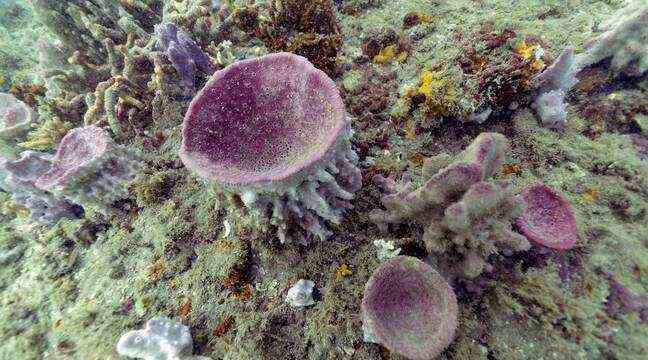They are only a centimeter in length, but are possibly the remains of the oldest known form of animal life on Earth. Fossil structures resembling sponges have been discovered in northwestern Canada. According to a study published Wednesday, they lived in the oceans 890 million years ago. This finding challenges the long-held theory that animals only appeared after a large injection of oxygen into the atmosphere and oceans.
Sponges are simple animals with an old story. Genetic analysis of modern sponges indicates their probable appearance between a billion and 500 million years ago. But no sponge fossil from this period, known as the Neoproterozoic era, had yet been unearthed.
Potentially broken record of 350 million years
Elizabeth Turner, a professor at Laurentian University of Canada, searched for such fossils in geological layers of reefs dating back 890 million years, reefs “made” by bacteria that deposited calcium carbonate on them. The researcher identified tiny tubular structures there, containing calcite crystals contemporary to reefs, which closely resemble the skeleton found in modern sponges.
If this discovery, published in the journal Nature, is confirmed, these fossils would exceed by 350 million years the oldest known to date. “The oldest animals that appeared in an evolutionary process were probably sponges. Which is not all that surprising considering that sponges are the simplest animals in the tree of animal life, ”she explained.
“Very small and discreet”
If the fossils she found are indeed sponges, the latter measured about a centimeter. They were “tiny and inconspicuous, living in dark folds and hollows under the outer surface of the reef,” she explains. They would have lived about 90 million years before the oxygen level on Earth reached levels believed to be necessary for the appearance of animal life. And therefore before the oxygenation event of the Neoproterozoic.
“If my interpretation of the ‘material’ found is correct, the first animals appeared before this event and would have tolerated relatively low oxygen levels compared to current conditions,” said Professor Turner. She considers “possible that the first animals tolerated a low level of oxygenation, as is the case with some current sponges.” But more complex animal types could only appear after the Neoproterozoic oxygenation event.

